Opinion
JULY 1983: TAMILS DO NOT BLAME SINHALESE PEOPLE
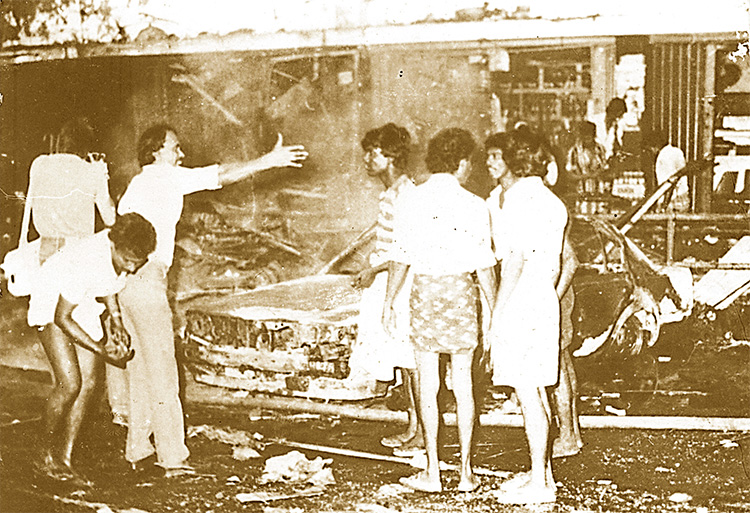
By Jayantha Somasundaram
(This articlecontinued from yesterday (25) is based on reporting by the international media on the events in Sri Lanka forty years ago.)
“For day after day Tamils were beaten, hacked or burned to death in the streets, on buses, on trains – sometimes in the sight of horrified foreign tourists. Their homes and shops were burned and looted. Yet the security forces seemed either unwilling or unable to stop it – indeed, in Jaffna and Trincomalee, some members of the armed forces themselves joined in the fray, claiming an admitted 51 lives. And not until the fifth day, did President Jayewardene finally appear on television. In that address he did not utter a single word of sympathy for the victims of the violence and destruction.” (Paul Sieghart Sri Lanka: A Mounting Tragedy of Errors International Commission of Jurists 3/1/84)
“Mr Athulathmudali, who was later to be appointed Minister of Security on the same television programme, nearly wept with ponderous histrionics over a sight he had never dreamed he would see – lines of Sinhalese people waiting to buy food as a result of the riots! He had not a word to say in sympathy for the frightened Tamils crowded in indescribable conditions in refugee camps. In the first days after the holocaust neither the President nor the Cabinet, nor even a single prominent Sinhalese politician visited them,” wrote Harvard Professor S. J. Thambiah, in Ethnic Fratricide and the Dismantling of Democracy.
The British Guardian said that “The President has decided that his immediate task is to placate the majority Sinhalese mobs which are still rioting, burning, looting and murdering at the expense of the Tamil minority. He has· effectively outlawed the only serious Tamil party (TULF). Instead of throwing a protective Gandhian arm around the minority population, the President has thus at a stroke disfranchised the great mass of them and turned them into a race of untermenschen or institutionalised second class citizens. The danger is that the President’s decision may be seen both by the Sinhalese mobs and the Tamil masses as a virtual endorsement of the blood bath.”
“When presented with evidence that the Army or the Police have committed atrocities against defenceless Tamils, the Government has reacted with a shrug of the shoulders,” wrote Francis Wheen in the London Times (30.7.83). “Police misconduct has actually been rewarded. In two separate cases the Supreme Court found that police officers had acted illegally; in both cases the officers concerned were promoted.”
“On the first day of violence in Colombo,” wrote T.R. Lansner in the London Observer (14.8.83) “when thousands of Tamil businesses and residences were gutted, police had orders not to intervene, it is claimed. Certainly hundreds of armed Police deployed through the city could be seen standing idly by as mobs broke vehicles and looted homes and businesses. Even when Tamils were set upon and beaten and burned to death, police armed with automatic weapons did nothing.”
Conspiracy Theory
Having watched silently for almost a week as anti-Tamil violence engulfed Sri Lanka, Indian Prime Minister Mrs. Indira Gandhi finally telephoned Jayewardene on 28 July and expressed concern about the situation in Sri Lanka and the fate of its Tamil population. She also informed him that she was sending her External Affairs Minister Narasimha Rao on the following day to Colombo. “The Indian Foreign Minister, P.V. Narasimha Rao, met with President J.R. Jayewardene today to discuss the situation.” (New York Times 30/7/83)
Given international media reporting and diplomatic concern, the Jayewardene-Premadasa Regime now found it necessary to change its position and distance themselves from the perpetrators of violence. Government spokesmen thereafter laid claim to an anti-Government plot, a Communist Conspiracy and foreign involvement, to explain the unchecked anti-Tamil violence of the previous week. To substantiate this they proscribed the Communist Party, the Nava Sama Samaja Party and the Janatha Vimukthi Peramuna (JVP). “The Colombo Sun called for the closing of all Soviet bloc embassies, specifically those of the Soviet Union and East Germany.” (New York Times 2/8/83)
But in a letter to the President, TULF leader Amirthalingam said: The Tamil people do not believe that Left parties had any hand in the attack on them. They regard this as an attempt to win the sympathy and support of the Western powers. The attack on the Tamil people was executed by the same forces that attacked the strikers in July 1980, attacked Professor (Ediriweera) Sarachchandra and demonstrated outside the houses of Judges (in June).”
“Initially Mr. Jayewardene hinted publicly at an Indian-Soviet Conspiracy and rumours spread that he had asked Western powers for help,” wrote John Elliot in the Financial Times. “Then he said he had no ‘direct evidence’ of a foreign power’s involvement but he was sure that army officers loyal to the JVP planned civil disturbances. Recently in an interview in Colombo he told me that the trouble was caused by the JVP together with people in his own party who are violently anti-separatist.
“Cyril Matthew, a member of the rigidly Buddhist Jaggery caste and boss of the UNP’s trade union is widely suspected in Colombo of having a guiding influence over the riots.”
John Elliot continued: Many foreign and local observers regard the claims of Mr. Jayewardene and his fellow Ministers as an attempt to cover up the fact that a few leading members of his own Government may have played a role in the plot which was partly aimed at striking a death blow at Tamil activists and at removing Tamils from their positions.
Mrs B: Govt. looking for Scapegoats
In an interview with Asiaweek (12.8.83) former Prime Minister Mrs. Bandaranaike dismissed the ‘conspiracy theory’. “It is definitely racial,” she said. “Anyone who says the violence was anything else but racial is living in a fool’s paradise. This government since it came to power in 1977 has been trying to encourage lawlessness. The UNP (United National Party) and its members have been on the wrong side of the law all the time. Now they are telling lies – that this is a plot to overthrow the government. They are only interested in looking for scapegoats.”
“There is a wealth of theory and a remarkable shortage of fact,” comments the International Commission of Jurists, “(State Minister Ananda Tissa de Alwis saw in the master plan ‘the minds of certain foreign elements’. He had previously said much the same about the 1981 outbreak. In a press interview in December 1983, he identified those foreign elements as the KGB. In parallel press interviews his colleague Cyril Matthew saw ‘the dirty hand of India’. For simpler-minded Tamils the answer is only too obvious: the entire blame falls on the Government but interestingly and encouragingly they do not blame the Sinhalese people as such, nor have they attempted any reprisals against them. What I find most extraordinary is that to this day there has been no attempt to find out the truth through an official, public and impartial enquiry when the situation in the country cries out for nothing less.”
“Virtually every Tamil I met was of the opinion that the violence against them was organised by the Government,” reported Princeton University Professor Gananath Obeysekera in Political Violence and the Future of Democracy.
“Both the Tamils hurt by these events and even Sinhalese people, as well as the foreign press, openly stated that the government either condoned the attack or it was done by factions within the government. As a response the government came out with its own theory of an international and local Communist conspiracy,” continues Professor Obeysekera. “According to this anti- Government plot scenario the Muslims and Christians were to be massacred next. All three of the proscribed parties were sympathetic with Tamil language aspirations. Similarly it is difficult to believe that a government so promptly informed of (Vijaya Kumaranatunga’s) ’Naxalite’ plot by the CID a day after the presidential elections were ignorant of a more serious plot by Marxist groups to create race riots. In other words, the government was forewarned of a plot that did not occur but not warned of one that did! If the race riots were caused by Marxists why did the government imply that it was a popular uprising by the Sinhalese and why in heavens name did no one offer sympathy for the dispossessed?”
The Jayewardene Regime now carried the pogrom to its logical conclusion. First, they made it clear that the remaining Tamil population were hostage against any external intervention to protect them. J.R. Jayewardene told India Today “The worst that India can do is to invade us. If they invade us that is the end of the Tamils in this country.”
Fourteen Hours: Fourteen Minutes
In The Break-Up of Sri Lanka, A.J. Wilson Founding Professor of Political Science at the University of Ceylon quotes Minister Gamini Dissanayake as telling a meeting at (UNP HQ) Sri Kotha on 5th September: “They are bringing an army from India. It will take 14 hours to come from India. In 14 minutes, the blood of every Tamil in the country can be sacrificed to the soil by us.”
The Regime proceeded with the Sixth Amendment to the Constitution which removed the TULF from parliament. Tamil MPs supporting the UNP Regime took the required oath and retained their seats. But none of them: S. Thondaman, Bill Devanayagam and C. Rajadurai, were re-elected to Parliament at the next General Election. Thondaman did return to Parliament, but on the National list.
Second, the pogrom was used to economically marginalise the Tamils. Ananda Tissa de Alwis explained that the ownership of Tamil businesses would be restructured to deny them a majority shareholding. And trade itself would be reorganised. “The Trade Minister has already reorganised rice wholesaling to break the Tamil grip. It is no longer in my interests to allow one community to dominate, insists Lalith Athulathmudali,” in the Irish Times (24.8.83). ‘The Tamils have dominated the commanding heights of everything good in Sri Lanka,’ explained Finance Minister Ronnie de Mel, “the only solution is to restore the rights of the Sinhala majority.’ “
“Today, after nearly a week of killing and burning Sri Lanka’s aura of stability and progress has evaporated. Hundreds of businesses and factories lie in ashes, and economic development, the Government says, has been set back three years, five years, even more. Tamils were dragged from their homes, set fire, stabbed, hacked with axes and run over. The true extent of the killings remains unknown, because many are still missing. Thousands of Tamils fled to refugee camps … Tamil homes were burned down, and Tamil-owned businesses in Colombo were gutted. Seventeen major factories wholly or partly owned by Tamils were turned into ash, including two that employed thousands of people each. Three plants that produced textiles for export were destroyed. Damage estimates are uncertain and incomplete, but the total economic loss has been placed at $300 million or more, and 150,000 people are said to have been rendered jobless. About 10,000 foreign tourists were here when the trouble started. All but about 1,500 have left. ‘If the Tigers take one more Sinhalese life in the north,” T. D. S. A. ‘Jungle’ Dissanayake, a Government official, said, ”I hate to think of the consequences.” (New York Times 4/8/83)
The final toll may never be known but during that week when homes, shops farms, cinemas, factories and vehicles belonging to Tamils were destroyed 140,000 of them fled to refugee camps. Government estimates were that 100 factories and 2,497 shops were destroyed and so large was the collection of burned out vehicles that they had to be carried out to sea for disposal.
Nazism
“Not only may foreign investors now be frightened away, but the island’s once-prosperous Tamils may no longer be counted as a mainstay of Sri Lanka’s economy…. An estimated 100,000 were left homeless. Government miscalculation and inaction have contributed to the violence,” explained The Christian Science Monitor. “So has a breakdown in discipline among the almost exclusively Sinhalese Army and police… Bewildering to even some of Mr. Jayewardene’s aides, is that the President has not made a conciliatory public statement to the Tamils; has offered no compensation; and done nothing to appease. Rightly or wrongly, this is being interpreted as a colossal show of weakness, indifference or isolation, by both Tamils and educated Sinhalese. Rather, he has permitted his Cabinet members to flail on the ”involvement of foreign powers,” a well-coordinated ”foreign plot.” When such statements were received with annoyance and some derision by Colombo’s elite, the President himself spoke only of a Sri Lankan ‘leftist plot.’”
“Half of the 4,100 Tamil shops in this once-gracious capital have been burnt to the ground. Seventeen major Tamil owned textile factories have been gutted in Colombo alone… The export-oriented tea industry in the lush hills has, according to the finance minister, nearly disappeared. For it was Sri Lanka’s Tamils who were the entrepreneurial class. In the greater Colombo area, though they represent only 9 percent of the population, one-third of the capital’s businesses and investments were in Tamil hands.” (Mary Anne Weaver The Christian Science Monitor Boston, Mass. 8 Aug 1983)
“In 2004, President Chandrika Kumaratunga gave a public apology to Tamils for Black July, likening it to Nazism. She appointed a commission, which concluded that nearly 1,000 people died and 700,000 were exiled. And she acknowledged there might be many more unreported incidents. … Despite Mrs Kumaratunga’s gestures, no one has been held accountable for the July killings.” (BBC 23 July 2013)
Opinion
Thoughts for Unduvap Poya
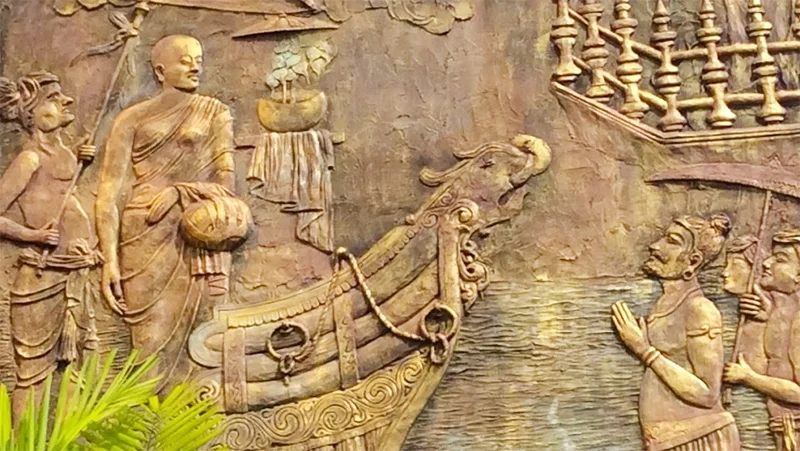
Unduvap Poya, which falls today, has great historical significance for Sri Lanka, as several important events occurred on that day but before looking into these, as the occasion demands, our first thought should be about impermanence. One of the cornerstones of Buddha’s teachings is impermanence and there is no better time to ponder over it than now, as the unfolding events of the unprecedented natural disaster exemplify it. Who would have imagined, even a few days ago, the scenes of total devastation we are witnessing now; vast swathes of the country under floodwaters due to torrential rain, multitudes of earth slips burying alive entire families with their hard-built properties and closing multiple trunk roads bringing the country to a virtual standstill. The best of human kindness is also amply demonstrated as many risk their own lives to help those in distress.
In the struggle of life, we are attached and accumulate many things, wanted and unwanted, including wealth overlooking the fact that all this could disappear in a flash, as happened to an unfortunate few during this calamitous time. Even the survivors, though they are happy that they survived, are left with anxiety, apprehension, and sorrow, all of which is due to attachment. We are attached to things because we fail to realise the importance of impermanence. If we do, we would be less attached and less affected. Realisation of the impermanent nature of everything is the first step towards ultimate detachment.
It was on a day like this that Arahant Bhikkhuni Sanghamitta arrived in Lanka Deepa bringing with her a sapling of the Sri Maha Bodhi tree under which Prince Siddhartha attained Enlightenment. She was sent by her father Emperor Ashoka, at the request of Arahant Mahinda who had arrived earlier and established Buddhism formally under the royal patronage of King Devanampiyatissa. With the very successful establishment of Bhikkhu Sasana, as there was a strong clamour for the establishment of Bhikkhuni Sasana as well, Arahant Mahinda requested his father to send his sister which was agreed to by Emperor Ashoka, though reluctantly as he would be losing two of his children. In fact, both served Lanka Deepa till their death, never returning to the country of their birth. Though Arahant Sanghamitta’s main mission was otherwise, her bringing a sapling of the Bo tree has left an indelible imprint in the annals of our history.
According to chronicles, King Devanampiyatissa planted the Bo sapling in Mahamevnawa Park in Anuradhapura in 288 BCE, which continues to thrive, making it the oldest living human planted tree in the world with a known planting date. It is a treasure that needs to be respected and protected at all costs. However, not so long ago it was nearly destroyed by the idiocy of worshippers who poured milk on the roots. Devotion clouding reality, they overlooked the fact that a tree needs water, not milk!
A monk developed a new practice of Bodhi Puja, which even today attracts droves of devotees and has become a ritual. This would have been the last thing the Buddha wanted! He expressed gratitude by gazing at the tree, which gave him shelter during the most crucial of times, for a week but did not want his followers to go around worshipping similar trees growing all over. Instead of following the path the Buddha laid for us, we seem keen on inventing new rituals to indulge in!
Arahant Sanghamitta achieved her prime objective by establishing the Bhikkhuni Sasana which thrived for nearly 1200 years till it fell into decline with the fall of the Anuradhapura kingdom. Unfortunately, during the Polonnaruwa period that followed the influence of Hinduism over Buddhism increased and some of the Buddhist values like equality of sexes and anti-casteism were lost. Subsequently, even the Bhikkhu Sasana went into decline. Higher ordination for Bhikkhus was re-established in 1753 CE with the visit of Upali Maha Thera from Siam which formed the basis of Siam Maha Nikaya. Upali Maha Thero is also credited with reorganising Kandy Esala Perahera to be the annual Procession of the Temple of Tooth, which was previously centred around the worship of deities, by getting a royal decree: “Henceforth Gods and men are to follow the Buddha”
In 1764 CE, Siyam Nikaya imposed a ‘Govigama and Radala’ exclusivity, disregarding a fundamental tenet of the Buddha, apparently in response to an order from the King! Fortunately, Buddhism was saved from the idiocy of Siyam Nikaya by the formation of Amarapura Nikaya in 1800 CE and Ramanna Nikaya in 1864 CE, higher ordination for both obtained from Burma. None of these Niakya’s showed any interest in the re-establishment of Bhikkhuni Sasana which was left to a band of interested and determined ladies.
My thoughts and admiration, on the day Bhikkhuni Sasana was originally established, go to these pioneers whose determination knew no bounds. They overcame enormous difficulties and obtained higher ordination from South Korea initially. Fortunately, Ven. Inamaluwe Sri Sumangala Thero, Maha Nayaka of Rangiri Dambulla Chapter of Siyam Maha Nikaya started offering higher ordination to Bhikkhunis in 1998 but state recognition became a sore point. When Venerable Welimada Dhammadinna Bhikkhuni was denied official recognition as a Bhikkhuni on her national identity card she filed action, with the support of Ven. Inamaluwe Sri Sumangala Thero. In a landmark majority judgement delivered on 16 June, the Supreme Court ruled that the fundamental rights of Ven. Dhammadinna were breached and also Bhikkhuni Sasana was re-established in Sri Lanka. As this judgement did not receive wide publicity, I wrote a piece titled “Buddhism, Bhikkhus and Bhikkhunis” (The Island, 10 July 2025) and my wish for this Unduvap Poya is what I stated therein:
“The landmark legal battle won by Bhikkhunis is a victory for common sense more than anything else. I hope it will help Bhikkhuni Sasana flourish in Sri Lanka. The number of devotees inviting Bhikkhunis to religious functions is increasing. May Bhikkhunis receive the recognition they richly deserve.” May there be a rapid return to normalcy from the current tragic situation.”
by Dr Upul Wijayawardhana
Opinion
Royal Over Eighties
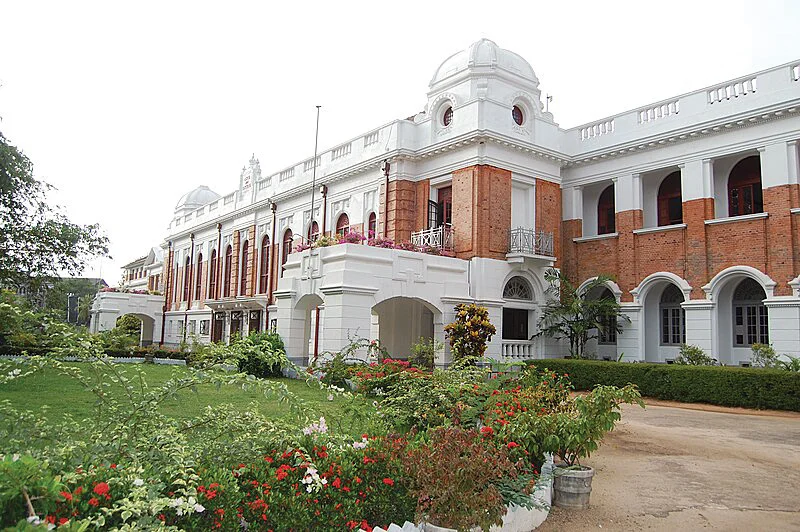
The gathering was actually of ‘Over Seventies’ but those of my generation present were mostly of the late eighties.
Even of them I shall mention only those whom I know at least by name. But, first, to those few of my years and older with whom speech was possible.
First among them, in more sense than one, was Nihal Seneviratne, at ninety-one probably the oldest present. There is no truth to the story that his state of crisp well-being is attributable to the consumption of gul-bunis in his school days. It is traceable rather to a life well lived. His practice of regular walks around the house and along the lane on which he lives may have contributed to his erect posture. As also to the total absence of a walking stick, a helper, or any other form of assistance as he walked into the Janaki hotel where this gathering took place.
Referencing the published accounts of his several decades-long service in Parliament as head of its administration, it would be moot to recall that his close friend and fellow lawyer, J E D Gooneratne, teased him in the following terms: “You will be a bloody clerk all your life”. He did join service as Second Assistant to the Clerk to the House and moved up, but the Clerk became the Secretary General. Regardless of such matters of nomenclature, it could be said that Nihal Seneviratne ran the show.
Others present included Dr. Ranjith de Silva, Surgeon, who was our cricket Captain and, to the best of my knowledge, has the distinction of never engaging in private practice.
The range of Dr. K L (Lochana) Gunaratne’s interests and his accomplishments within each are indeed remarkable. I would think that somebody who’d received his initial training at the AA School of Architecture in London would continue to have architecture as the foundation of his likes /dislikes. Such would also provide a road map to other pursuits whether immediately related to that field or not. That is evident in the leadership roles he has played in the National Academy of Sciences and the Institute of Town Planners among others. As I recall he has also addressed issues related to the Panadura Vadaya.
My memories of D L Seneviratne at school were associated with tennis. As happens, D L had launched his gift for writing over three decades ago with a history of tennis in Sri Lanka (1991). That is a game with which my acquaintance is limited to sending a couple of serves past his ear (not ‘tossing the ball across’ as he asked me to) while Jothilingam, long much missed, waited for his team mates to come for practices. It is a game at which my father spent much time both at the Railway sports club and at our home-town club. (By some kind of chance, I recovered just a week ago the ‘Fred de Saram Challenge Cup’ which, on his winning the Singles for the third time, Koo de Saram came over to the Kandana Club to hand over to him for keeps. They played an exhibition match which father won). D L would know whether or not, as I have heard, in an exhibition match in Colombo, Koo defeated Frank Sedgman, who was on his triumphant return home to Oz after he had won the Wimbledon tournament in London.
I had no idea that D L has written any books till my son brought home the one on the early history of Royal under Marsh and Boake, (both long-bearded young men in their twenties).
It includes a rich assortment of photographs of great value to those who are interested in the history of the Anglican segment of Christian missionary activity here in the context of its contribution to secondary school education. Among them is one of the school as it appeared on moving to Thurstan road from Mutwal. It has been extracted from the History of Royal, 1931, done by students (among whom a relative, Palitha Weeraman, had played a significant role).
As D L shows, (in contra-distinction to the Catholic schools) the CMS had engaged in a largely secular practice. Royal remained so through our time – when one could walk into the examination room and answer questions framed to test one’s knowledge of Christianity, Buddhism, Hinduism and Islam; a knowledge derived mostly from the lectures delivered by an Old Boy at general assembly on Friday plus readings from the Dhammapada, the Bhagavad Gita, the St. John’s version of the Bible or the Koran recited by a student at senior assembly on Tuesday / Thursday.
D L’s history of Royal College had followed in 2006.
His writing is so rich in detail, so precise in formulation, that I would consider this brief note a simple prompt towards a publisher bringing out new editions at different levels of cost.
It was also a pleasure to meet Senaka Amarasinghe, as yet flaunting his Emperor profile, and among the principal organisers of this event.
The encounter with I S de Silva, distinguished attorney, who was on Galle road close to Janaki lane, where I lived then was indeed welcome. As was that with Upali Mendis, who carried out cataract surgery on my mother oh so long ago when he was head of the Eye Hospital. His older brother, L P, was probably the most gifted student in chemistry in our time.
Most serendipitous perhaps was meeting a son of one of our most popular teachers from the 1950s, – Connor Rajaratnam. His cons were a caution.
by Gamini Seneviratne
Opinion
“Regulatory Impact Assessment – Not a bureaucratic formality but essentially an advocacy tool for smarter governance”: A response
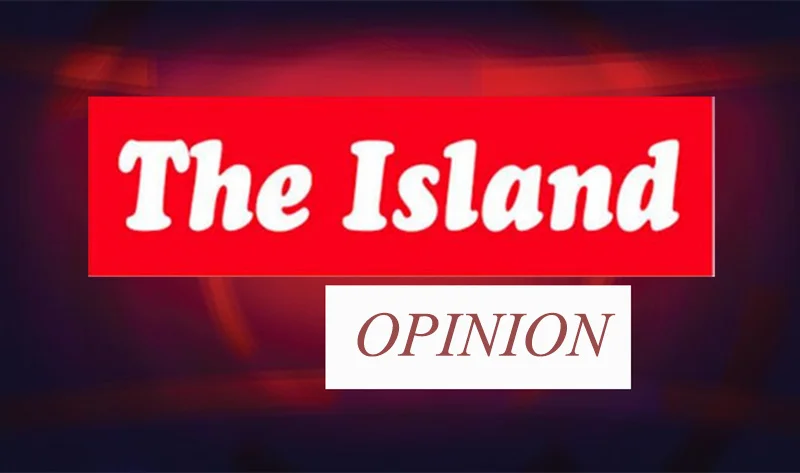
Having meticulously read and re-read the above article published in the opinion page of The Island on the 27 Nov, I hasten to make a critical review on the far-reaching proposal made by the co-authors, namely Professor Theekshana Suraweera, Chairman of the Sri Lanka Standards Institution and Dr. Prabath.C.Abeysiriwardana, Director of Ministry of Science and Technology
The aforesaid article provides a timely and compelling critique of Sri Lanka’s long-standing gaps in evidence-based policymaking and argues persuasively for the institutional adoption of Regulatory Impact Assessment (RIA). In a context where policy missteps have led to severe economic and social consequences, the article functions as an essential wake-up call—highlighting RIA not as a bureaucratic formality but as a foundational tool for smarter governance.
One of the article’s strongest contributions is its clear explanation of how regulatory processes currently function in Sri Lanka: legislation is drafted with narrow legal scrutiny focused mainly on constitutional compliance, with little or no structured assessment of economic, social, cultural, or environmental impacts. The author strengthens this argument with well-chosen examples—the sudden ban on chemical fertilizer imports and the consequences of the 1956 Official Language Act—demonstrating how untested regulation can have far-reaching negative outcomes. These cases effectively illustrate the dangers of ad hoc policymaking and underscore the need for a formal review mechanism.
The article also succeeds in demystifying RIA by outlining its core steps—problem definition, option analysis, impact assessment, stakeholder consultation, and post-implementation review. This breakdown makes it clear that RIA is not merely a Western ideal but a practical, structured, and replicable process that could greatly improve policymaking in Sri Lanka. The references to international best practices (such as the role of OIRA in the United States) lend credibility and global context, showing that RIA is not experimental but an established standard in advanced governance systems.
However, the article could have further strengthened its critique by addressing the political economy of reform: the structural incentives, institutional resistance, and political culture that have historically obstructed such tools in Sri Lanka. While the challenges of data availability, quantification, and political pressure are briefly mentioned, a deeper analysis of why evidence-based policymaking has not taken root—and how to overcome these systemic barriers—would have offered greater practical value.
Another potential enhancement would be the inclusion of local micro-level examples where smaller-scale regulations backfired due to insufficient appraisal. This would help illustrate that the problem is not limited to headline-making policy failures but affects governance at every level.
Despite these minor limitations, the article is highly effective as an advocacy piece. It makes a strong case that RIA could transform Sri Lanka’s regulatory landscape by institutionalizing foresight, transparency, and accountability. Its emphasis on aligning RIA with ongoing national initiatives—particularly the strengthening of the National Quality Infrastructure—demonstrates both pragmatism and strategic vision.
At a time, when Chairmen of statutory bodies appointed by the NPP government play a passive voice, the candid opinion expressed by the CEO of SLSI on the necessity of a Regulatory Impact Assessment is an important and insightful contribution. It highlights a critical missing link in Sri Lanka’s policy environment and provides a clear call to action. If widely circulated and taken seriously by policymakers, academics, and civil society, it could indeed become the eye-opener needed to push Sri Lanka toward more rational, responsible, and future-ready governance.
J. A. A. S. Ranasinghe,
Productivity Specialty and Management Consultant
(rathula49@gmail.com)
-

 News6 days ago
News6 days agoWeather disasters: Sri Lanka flooded by policy blunders, weak enforcement and environmental crime – Climate Expert
-
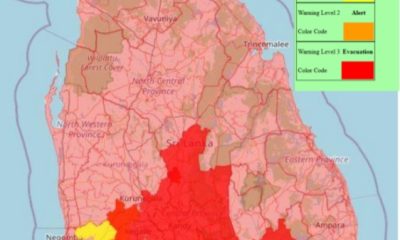
 Latest News7 days ago
Latest News7 days agoLevel I landslide RED warnings issued to the districts of Badulla, Colombo, Gampaha, Kalutara, Kandy, Kegalle, Kurnegala, Natale, Monaragala, Nuwara Eliya and Ratnapura
-
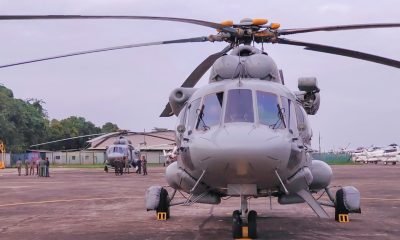
 Latest News7 days ago
Latest News7 days agoINS VIKRANT deploys helicopters for disaster relief operations
-
News3 days ago
Lunuwila tragedy not caused by those videoing Bell 212: SLAF
-

 Latest News4 days ago
Latest News4 days agoLevel III landslide early warnings issued to the districts of Badulla, Kandy, Kegalle, Kurunegala, Matale and Nuwara-Eliya
-

 News2 days ago
News2 days agoLevel III landslide early warning continue to be in force in the districts of Kandy, Kegalle, Kurunegala and Matale
-

 Features4 days ago
Features4 days agoDitwah: An unusual cyclone
-

 Latest News5 days ago
Latest News5 days agoUpdated Payment Instructions for Disaster Relief Contributions













